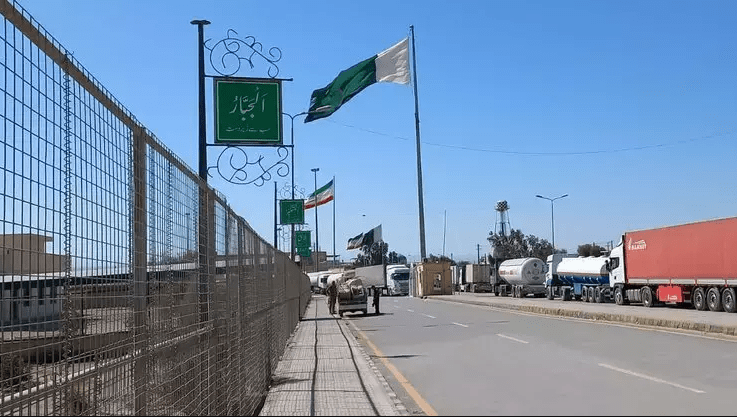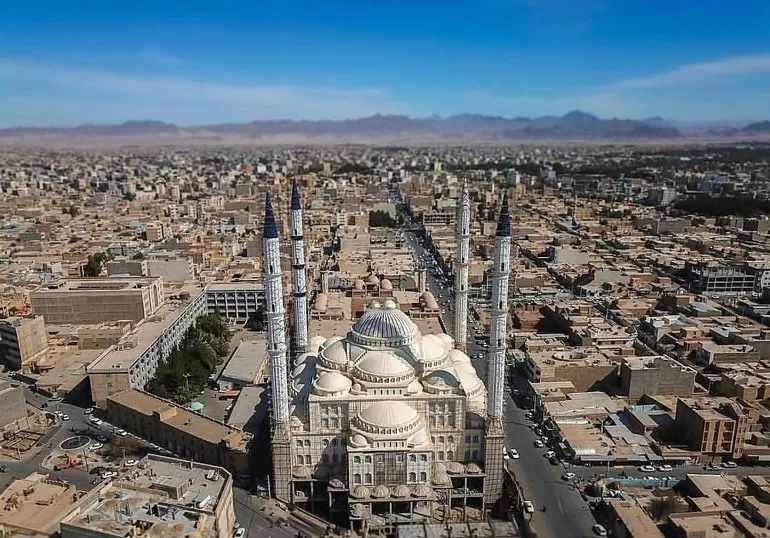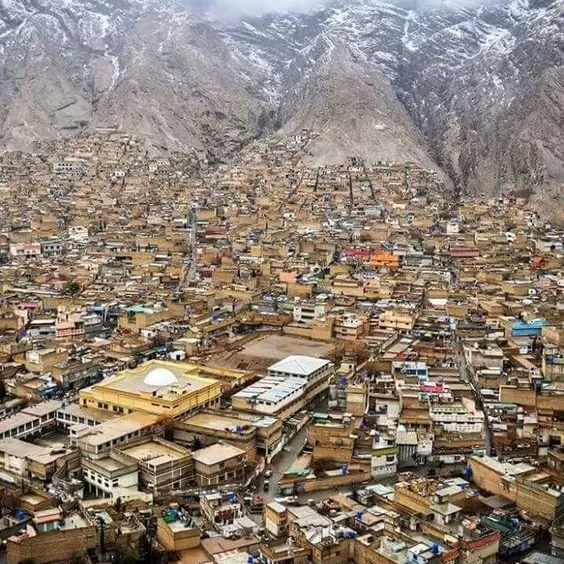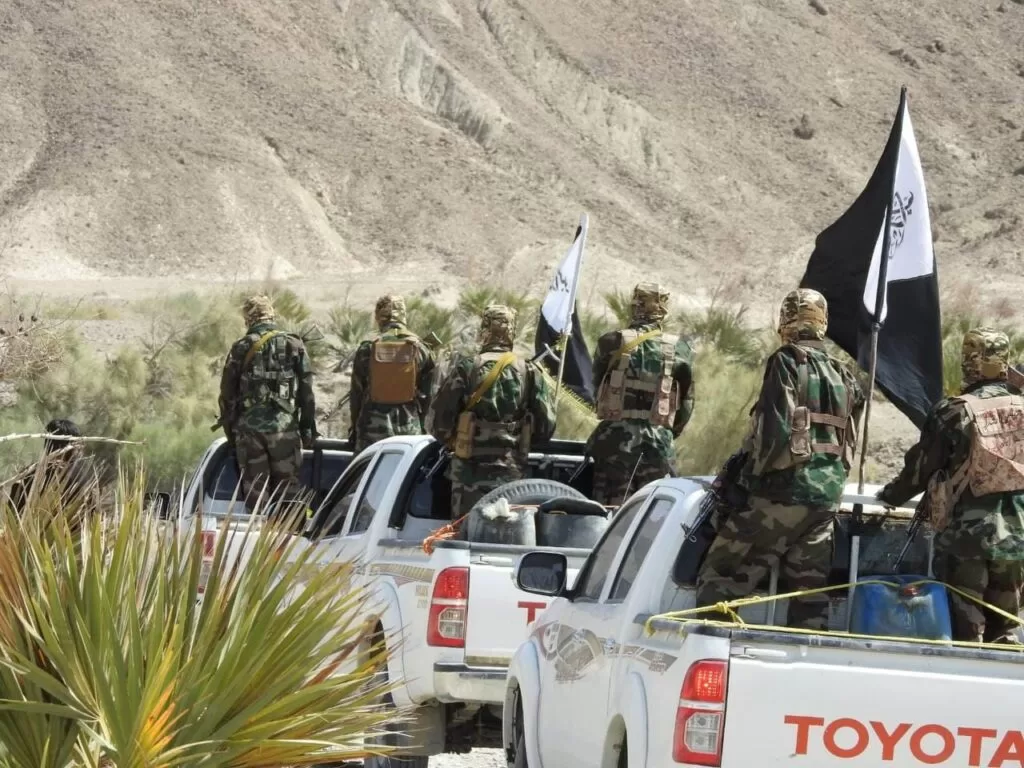Pakistan and Iran’s relations are cumbersome irrespective of their Muslim brethren mantra. Both countries have accused each other of providing safe havens for terrorists. Baloch nationalism, a movement fueled by a sense of marginalization and a desire for greater autonomy among the Baloch people, poses a complex challenge for both Iran and Pakistan. The Baloch population straddles the border between the two countries, with significant communities in Iran’s Sistan-Baluchestan province and Pakistan’s Balochistan province. Sarmachar, a term referencing Baloch militants, refers to armed groups that have engaged in violence and insurgency in pursuit of separatist goals. For Iran, these groups threaten stability in a border region vital for trade. Pakistan views Baloch insurgency through the lens of national security and has accused Iran of providing support to some militant groups. This complex situation strains relations between Iran and Pakistan, leading to accusations and occasional cross-border attacks targeting militants.
Balochistan is a region with a unique cultural and historical background, currently split across Pakistan, Iran, and Afghanistan. This region derives its name from the Baloch tribe, which settled there centuries ago and has experienced territorial divisions by various rulers, including Persians and British. Most of Balochistan is located in southwestern Pakistan, where it became a part of the country in 1948 following its independence. Despite being Pakistan’s largest province by area, covering 44% of the nation’s land, it remains the least populated and least developed, facing numerous challenges for years.

History of the Baloch Tribes:
There are almost 120 distinct Baloch tribes in the region. Some of the most prominent tribes include the Bugti, Marri, Mengal, Bizenjo, and Rind, among others. Baloch population (roughly 50%) is in Balochistan, a significant population in Sindh (40%), and a smaller population in Southern Punjab and KPK. The political and social affiliations of these tribes are complex and are ever evolving. The Baloch Tribe originated in the 12th century when Mir Jalal Khan united 44 tribes to form a confederacy. By the 15th century, Mir Chakar Rind led a vast Baloch confederacy that extended from Kirman to the Indus River. However, political cohesion faded after his demise. In 1666, the first Kalat confederacy was established by Mir Ahmad Khan, incorporating regions like Kandahar and Karachi. His grandson, Mir Nasir Khan, later strengthened the confederacy with a unified military and administrative structure, dividing Kalat into Sarawan and Jhalawan. This marked the commencement of governance by a council of Sardars, lasting until British involvement in 1939.
British became more interested in Balochistan with the expansion of Russia into Central Asia. Balochistan was divided as part of the strategic effort to deter Russian advancement towards India, leading to significant territorial losses for the Baloch people due to the ‘Great Game.’ Borders were redrawn, transferring parts of Balochistan to Persia and Afghanistan through the Goldsmid Line and the Durand Line agreements, affecting the region’s integrity. The area only saw further changes after joining Pakistan, with regions like Jacobabad being reassigned to Sindh and D.G. Khan to Punjab.
Baloch nationalism is not a recent issue, it dates back to 1929 when Mir Muhammad Yusuf Ali Khan Magsi and Abdul Aziz Kurd set up Anjuman-i-Ittehad-i-Balochistan. It marked the beginning of a secular and non-tribal nationalist movement though serious efforts were started in 1927 with the commencing of the newspaper, ‘Balochistan‘ in Delhi by Abdul Aziz Kurd and Master Pir Baksh. In tribal traditions, a revolution was initiated by the demands of Yusuf Ali Magsi.
The demands were: unification and independence of Balochistan; a democratic, socialist system guided by Islamic universalism; abolition of the Sardari system; free & compulsory education for the Baloch; equality for Baloch women; and promotion of Baloch culture.
Anjuman-i-Ittehad-i-Balochistan faced challenges in the new political environment after 1948. Pakistan’s political system evolved, and the direct influence of the organization decreased. However, its legacy lives on in the ongoing struggle for Baloch rights and autonomy, taken up by various groups in the region.
The Balochistan region has a history of conflict with the Pakistani government, marked by insurgencies seeking independence for the Baloch people. These insurgencies began in 1948 and reoccurred in the subsequent decades, intensifying after 2003. Some tribes or factions within tribes have expressed grievances against the Pakistani government, citing issues such as political disenfranchisement, economic marginalization, and disputes over natural resources. Notably, there are certain factions of a few tribes that have been involved in movements seeking greater autonomy – not all members of these tribes are against the government.
Notably, certain factions of the Bugti and Marri tribes have been involved in movements seeking greater autonomy or rights. However, it’s important to note that not all members of any given tribe are unified in their stance against the government, and many Baloch people and tribes seek peaceful and constructive engagement with the state to address their concerns. The inclusion of Kalat, a historically independent Baloch Khanate, into Pakistan in 1948 is considered by some elements as a debated issue that fuels Baloch separatist movements.

Baloch nationalists argue that accession was achieved through force and political manoeuvring, denying the Baloch people their right to self-determination. It is perceived by some as an unfair annexation that has fueled resentment and a desire for autonomy or even independence. A sense of neglect in development and political inclusion has bred resentment among the Baloch people towards the authorities.
India has been playing a crucial role in fueling the above-mentioned sentiments. The Indian support to separatist factions in Balochistan is aimed at destabilizing Pakistan. India’s role is adding an external dimension to an already complex internal issue by propagating anti-state sentiment in Balochistan. Pakistan has conducted extensive military and intelligence operations to suppress the insurgency, resulting in widespread human rights violations, including disappearances, torture, and extrajudicial killings.
The conflict has also strained relations with Iran, with both countries accusing each other of supporting separatist movements. Cross-border attacks have led to numerous casualties among soldiers, police, and civilians in the last five years.
Sarmachar from Iran is acclaimed for fighting for their socio-economic rights and the same is the agenda of Baloch Nationalism in Pakistan, the Marg Bar Sarmachar operation by Pakistan killed seven people in a border village near the city of Saravan, Iran. All were non-Iranian nationals.
This operation was a reaction to a drone attack by Iran which hit Baloch militant bases in Pakistan. Previously, Pakistan has shown serious concerns over the safe havens in Iran for Pakistani-origin terrorists.
They spilt the blood of Pakistanis and then hid in ungoverned places inside Iran – several terror attacks previously. Iran has specifically accused Pakistan of harbouring the Sunni separatist group Jaish al-Adl (Army of Justice), which has launched attacks against Iranian targets. An attack in December 2023 by this group on an Iranian police station in Sistan and Balochistan province resulted in the death of 11 Iranian police officers and injuries to others.

Socioeconomic Landscape of Sistan-Baluchestan
According to the Statistical Center of Iran (SCI), Sistan-Baluchestan is Iran’s poorest province. Rural households in the province, predominantly Sunni, earn an average annual income of just over $900, which is 55.3% below Iran’s rural household average. Urban households fare slightly better, with an average income of nearly $2,200, yet this is still 35.4% less than the national urban average. Despite promises for improvement, little has been done to enhance living conditions, with minimal investments in jobs, housing, or education. The region also faces severe issues with narcotics trafficking from Afghanistan, leading to numerous executions each year. Furthermore, following Mahsa Amini’s death in custody, the province experienced the highest casualty rates in nationwide protests. Additionally, the area has been hit hard by inflation, particularly in the food and beverages sector, which soared to 87% at times during the last Iranian year, exacerbating the province’s challenges.
According to the United Nations Development Programme (UNDP) report, 71% of people of Balochistan (Pakistan) live in multidimensional poverty while this figure is much lower in the other provinces. The Multidimensional Poverty Index (MPI) is a broad category for understanding and measuring poverty that also considers health, education, and standard of living along with income and wealth. The province’s share in the Gross Domestic Product (GDP) has also been declining, in comparison with other provinces over the past few decades.
The literacy rate (41%) is the lowest in Balochistan whereas the overall literacy rate of Pakistan was 60% as documented by the Pakistan Social and Living Standards Measurement (PSLM) survey conducted in 2018-19. The province also lags in other social indicators such as primary enrolment rate, access to sanitation and safe drinking water. It is also the least urbanized province as 69% of the population lives in rural areas. The World Bank reported in 2020 that 91.5% rural population of Pakistan have access to electricity whereas only 36% of Balochistan is electrified, while the remaining 64% of Balochistan does not have access to energy. Balochistan’s lack of infrastructure and scattered population make it difficult to provide services to the people.
Despite being the largest province and rich in natural resources, Balochistan remains the least developed province in the country. It significantly contributes over 40% to the national energy supply, including electricity, natural gas, and coal. Notably, natural gas, which constitutes 50% of the country’s energy usage, predominantly comes from Balochistan, holding 68% of the nation’s reserves. Yet, astonishingly, only four districts in the province have access to natural gas. The discovery of Sui gas in 1953 led to its supply to Rawalpindi by 1964, but Quetta, the provincial capital, had to wait 33 years for it.
Moreover, lucrative jobs in the local gas sector often go to people from other regions, fueling discontent among the locals. Many insist on being fairly included and compensated before any new explorations or developments proceed. The underdevelopment of the province can be attributed to non-inclusive policies, extractive institutions, a fragmented political landscape, and the disregard of both national and local leaders for the issues faced by residents. A high unemployment rate (9.13%) due to the lack of human development opportunities further deteriorates the economic situation and the likelihood of youth falling prey to extremist and terrorist organisations. It is estimated that every year out of the 25,000 graduates of different universities, only 2,000 secured a job. The high unemployment rate is not only a financial crisis but also a rising inflation that affects their mental health.
Recently a wave of terrorism in Pakistan, especially in the Balochistan province, questions the state writ. It has failed to provide security to the masses. In just one day, 10 bomb and grenade attacks on several police stations and the deputy commissioner’s office in Quetta, Khuzdar, and Turbat show that terrorists have the support of civilians across Balochistan.
Banned outfits Balochistan Liberation Army (BLA) and Balochistan Liberation Front (BLF) are at war with the state, the root cause of this is the discrimination against Balochistan. Poverty and inequality are highest in this province of Pakistan. Similarly, Sistan-Baluchestan, Iran’s most underdeveloped province, face severe poverty, with nearly half its population unable to afford basic subsistence as of 2016.
The region lacks essential services like adequate drinking water and faces deplorable living conditions. Financial hardships have driven some families to marry off daughters as young as nine for dowry benefits. Employment opportunities are scarce due to poor infrastructure, leading to high unemployment rates and forcing many to consider migration. Drought has devastated local farming, exacerbating the situation, with many areas relying on water truck deliveries due to a running water shortage.

Core-Periphery and Inequality
Inequality is higher as compared to other provinces in both provinces across borders. Pakistani Baloch are convinced that the state of Pakistan has failed to provide their due rights and after the occupation in 1948, they have not given their due share in resources. This underdevelopment of both provinces across the border could be explained by the ‘Core’ and ‘Periphery’ notion, where the distribution of revenues and development depends on the distance from the Core or Center. In earlier times, social scientists explained colonialism with the fact that dominance is based on religion and racial stereotypes. In the past, ‘Core’ was always countries like London or Paris, and the ‘periphery’ or colonies, which were viewed as insignificant and marginalized. Over time, discussions in social theory evolved to compare Western practices of democracy and liberalism as ‘authentic’, against the more local and indigenous practices in other regions, suggesting these were less developed. This concept of a ‘core’ could refer to a physical location, an ideology, or a specific way of doing things.
In Pakistan, Balochistan and Gilgit Baltistan (GB) are peripheries commonly referred to with words like “door draz ky ilaqay” (far-flung and backward areas) away from the Center (Punjab and Federal). The same is the case with Sistan- Baluchestan (southwestern province) the second largest of Iran’s 31 provinces with only 2.8 million inhabitants (3% of Iran’s 84 million population) making it the least densely populated area. The majority of people in the southern, western, and eastern regions of the province are Baloch or Baluch (1.5 – 2 million) making up about 2% of its population, yet they form the majority in this province. Over 6 million Baloch reside in Pakistan and another 600,000 in Afghanistan. The northern part, “Sistan,” near the Afghan border, primarily houses ethnic Persians, who are a minority in this province despite being the majority in Iran. The province is unique for having over half its population living in rural areas, contrary to Iran’s 74% urban population average. The literacy rate is the lowest (76% only) as compared to Iran’s 93% rate.
The Sistan-Baluchestan province is away from the capital and it is believed that provinces closer to Tehran get more power, attention, power, and corresponding funding.
Further, the Sunni population in the province is marginalised and the government of Iran has failed to integrate them into Iranian society. Extremism and sentiments against the Shiite government have increased and so are the efforts by the government to suppress Baloch Identity. The Iranian government has invested in promoting Shiism and Iranian nationalism, including converting Sunnis, demolishing Sunni mosques, and using education to spread Shiism. Persian is the only language of instruction, disadvantaging Baloch people. Discrimination and poor socioeconomic conditions have fueled separatist movements like Jundallah, which advocates for equal rights for Sunnis. Since its decline after the execution of its leader in 2010, new militant groups like Jaish ul Adl have emerged, conducting attacks against Iranian forces. These groups, including Jaish ul Adl (JUA) founded in 2012 by Salahuddin Farooqui (also known as Abdul Rahim Mulazadeh) with ties across the Iran-Pakistan border, have continued the struggle, using Pakistan as a base for their operations.
The depriving economic situation of both provinces makes it ideal for insurgencies and exploitation of youth. Domestic and external forces engage them to implement their nefarious agendas, which can only lead to destruction and no peace can be achieved. Indian influence on the Baloch people is evident in the Gulbhoshan Yadhav case and also in Balochistan. BLA and BLF getting financial and military support from India. The only thing misunderstood by these powers operating and supporting extremism and terrorism in peripheries is its spread in time and space. It can’t be contained to a certain region and eventually will reach every corner of the world. Whether it is BLA, BFA in Pakistan or Jundallah and JUA in Iran, they can be used elsewhere in the world for destruction. All of them claim discrimination and socioeconomic conditions as the key grievances for their opposition.

The Bloch across borders support each other under clan/tribe loyalty, attacks on Iranian forces and their hideouts in Balochistan have been claimed many times, recently, a missile attack by Iran and a similar reaction by Pakistan was a sad incident. Two brotherly countries violated the sovereignty of their neighbours. The MENA region is under fire already, neither Iran nor Pakistan can afford this military approach. The rapprochement in the Middle East is inevitable to make the world peaceful.
To resolve this conflict across borders as well as within Pakistan, the realization of problems and understanding of ground realities is the need of the time. The socioeconomic landscape of Baloch across borders is remarkably similar, poorest of the poor, no or limited access to health and other services, the lowest of the development budget and even social safety networks for the Baloch people.

All suggestions and reconciliation come later, first, we have to put our house in order by resolving internal security issues. The Balochistan province has been neglected for so long, the development of Balochistan will bring economic rewards for Pakistan. However, it is not possible without engaging locals in policy-making and implementation of the development projects—economic opportunities for the Baloch and infrastructure development so that they can be connected to the region. Awareness in the people of Balochistan about their exploitation by external forces will come later, until then the government of Pakistan must engage them by investing in improving their economic condition.
Even social net programs like ‘The Ehsaas Program’ do not include the poorest of the poor people of the province. Balochistan’s share among recipients of other interventions of Ehsaas is even less than 2%, similar to the case of the Kamyab Jawan Programme, agriculture loans and various subsidies. The Utility Stores Corporation (USC), which is the largest subsidy provider for essential food and non-food items, has its branches only in seven districts of Balochistan. This excludes the provision of subsidies in the 27 poorest districts of the country.
Similar Fate of Underdevelopment
In both countries, The Baloch are marginalised, severely underdeveloped and have limited access to health care, education, employment, and housing. The ethnic tensions and the fight to claim their rights have increased over the last 6-10 years exponentially. In Pakistan, enforced disappearances of Baloch people have created soft corners for militants in people all over the country. It became a national issue when the women (the most traditional and least educated, marginal to politics) of the periphery, marched towards the Core (Islamabad) and conveyed a strong message of resilience for the missing persons of their families. The voices of the women of the peripheries have reached the heartland, it is no longer possible to ignore the people living in the peripheries. If we look into political structure, both Iran and Pakistan possess unique political systems that blend theocratic and democratic elements, though with distinct structures. Iran operates as an Islamic Republic. The Supreme Leader holds ultimate authority, overseeing the elected President and legislative bodies. Religious principles heavily influence Iranian law and policy.
Pakistan, on the other hand, is a parliamentary democracy with a President as head of state and a Prime Minister leading the government. While Islam plays a significant role in Pakistani society, its legal system incorporates both Islamic and secular elements. In comparison, Iran emphasizes religious authority more strongly, while Pakistan embraces a greater degree of democratic representation within its governance structure.
Whatsoever is the reason behind inequality and injustice in both provinces across borders, it has to be addressed with conviction by Pakistan and Iran. Terrorism is a byproduct of utter poverty and inequality, which can only be eradicated by ending the support of civilians in the peripheries.
Safe havens for terrorists are present in Pakistan and Iran. Exploitation of these factors by external forces can’t be controlled only by the kinetic approach. Engaging civilian populations and giving them their rights, economic and social, is the only way towards a prosperous region.





